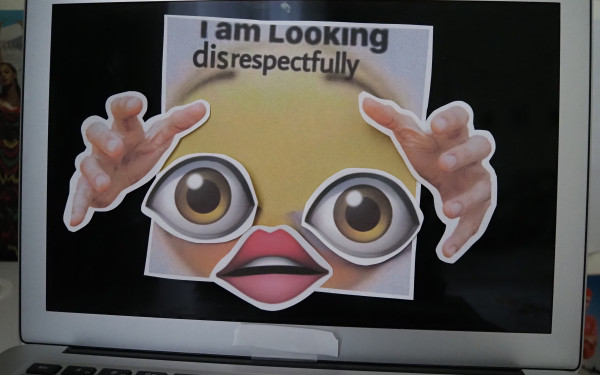Concordia faculty unlock the digital classroom
Professors navigate challenges this fall as classes resume
“There are no office hours. It’s cyberspace,” chuckled Murari Singh, an assistant professor at Concordia in mathematics and statistics. “We are really interacting in a cool environment.”
Singh, who managed transitioning his lessons online, coined “cool hours,” redefining his office hours on the Zoom video conference app.
In the wake of the global pandemic, Concordia professors and instructors had two modes of online learning to familiarize themselves with. The Centre for Teaching and Learning highlighted the specific terms: synchronous and asynchronous.
Synchronous means to orchestrate an entire class live online, a good example being a Zoom call, where everyone can tune in to the lesson taking place. Asynchronous is non-simultaneous, like Moodle’s online forum, where students and professors can post notes, comments, and critiques as it suits them.
This fall, Singh will blend both systems of online remote learning, posting drafted notes a week earlier with the virtual lectures to follow regularly. “It was quite hectic,” stated Singh, but he also noted that the transition overall was a good learning experience.
“It is tough propelling stuff from home in this moment,” said Simone Brugiapaglia, an assistant professor also in the department of mathematics and statistics.
Before the university hallways vacated completely, Brugiapaglia was teaching two advanced vector calculus classes with close to 250 students in total.
For his first live-streamed class on Zoom, 80 student profiles were logged in.
“I remember when I asked, ‘Okay, do you have any questions?’” he said. “The chat exploded. There was a lot of uncertainty.”
He restarted his math lectures with PowerPoint slides and a newly purchased document camera, a digital device that can capture him simultaneously writing down notes, since he did not have access to a blackboard.
“Fewer people were coming to the lecture, but I was trying to keep it as interactive as possible,” he said.
Brugiapaglia was worried for his teaching assistants. They struggled to adapt their practices and tutorials to a strictly virtual format because a minority of them did not have the technology to adapt coursework to the online environment. Luckily, some of them had iPads they could use, he said.
Online proctoring poses another crucial problem during the exam season. Since the online test software became fairly popular as the semester wound down, many are wary of the proctoring technology’s propensity for biased software and mass surveillance.
The technology uses facial recognition and eye tracking and accesses each student’s camera, audio, and website history. It perpetuates racism, sexism, and transphobia, according to an article published by MIT Technology Review.
As algorithmic invigilators monitor students during exams, Brugiapaglia said many students might take the opportunity to cheat as well, which affects grading papers fairly and infringes academic integrity.
The relationships and connections formed between teacher and student must remain vital during periods of class participation, online or not, said Brugiapaglia. He believes the best moments happen when a student raises their hand to add something new and unexpected to the lecture.
“There’s not an element in life that hasn’t turned inside-out lately.” — Beverley Best
“An unexpected interaction, an unexpected question happens, and that brings you in some kind of new territory to explore, bringing more reality into the lecture, more human interaction,” he said.
He hopes to recreate those moments on Zoom as well. “We’re not supposed to become machines all of a sudden.”
“There was no way that we could’ve reproduced what we were doing in class discussion in a remote style,” said Beverley Best, an associate professor of sociology.
In-class participation, dialogue, and debate are at the core of most coursework in the humanities. “There’s not an element in life that hasn’t turned inside-out lately,” Best said.
The subject matter of her course this fall, economic transformations in capitalist society, will be based on what’s happening in real-time through the lens of the economic crisis.
“What before took some more time and analysis of unpacking is now just overtly on the surface of life [online],” she said.
She explained that access to knowledge is constantly evolving, but academia might not be completely ready to go digital. The university, which tends to be a more conventional environment, is suddenly being thrown into the rushing stream of the digital, popular arena.
Jim Hillman, who instructs jazz drumming in the private studies section of the music department, was interested in experimenting for the first time with Whatsapp video. He wanted to see what it was like to instruct remotely.
“It’s a different experience,” he said. “How could it not be?”
This fall, he will rely more on music scripts and sheet music, because the sounds produced by the percussion require in-person craft and evaluation and do not sound as accurate when played during a videoconference.
In person, Hillman could demonstrate the jazz improvisation of the rhythm with a drum set. Then, he would show his students the written version of the improvisation, so they could get a better understanding of the desired sound, beat, and tempo.
To avoid delay and confusion, Hillman said he will have to post the noted transcriptions with some sound samples a week before the scheduled lessons.
Meanwhile, the fibres and material practices program in fine arts is facing more than one challenge.
“Fibres is having to jump through hoops to reconfigure and reimagine the curriculum,” stated Mary Sui Yee Wong, a part-time faculty member.
Wong worries about the economic constraints of students, faculty, and support staff in her department. She is also busy putting in unpaid hours figuring out and adjusting a digital curriculum, all while assembling “toolkits,” which her students will have to pick up individually at the campus this fall. The kits include textile, felt, and weaving materials so that fibres students will have the necessary materials and tools to accomplish their lab work.
“If we ask them to do basket-weaving, they’re going to need a box with some materials to make baskets,” she said.
With art labs and studios out of reach, she said students’ tuition will cover the necessary fees for the toolkits.
Wong still anticipates the economic and technical problems many students will endure relying heavily on internet data for Moodle and Zoom calls.
“We’re going to run into a lot of problems with students who don’t necessarily have good access to internet support,” she said, speaking from ten years teaching online. “We’re basically asking them to set up a home studio.”
“How do I develop a curriculum that’s a little bit more diverse, that can be all-encompassing?” asked Wong. “That causes me anxiety.”
Corrections: A previous version of this article erroneously identified Simone Brugiapaglia as an associate professor. He is an assistant professor. The article also erroneously stated he had close to 250 students in each class. In fact, he has close to 250 students in total. Paraphrases of Brugiapaglia pertaining to the the availability of iPads and the likelihood of academic dishonesty have been updated for accuracy. The Link regrets these errors.
This article originally appeared in The Disorientation Issue, published September 8, 2020.




mp3_600_375_s_c1.png)
_600_375_s_c1.png)
